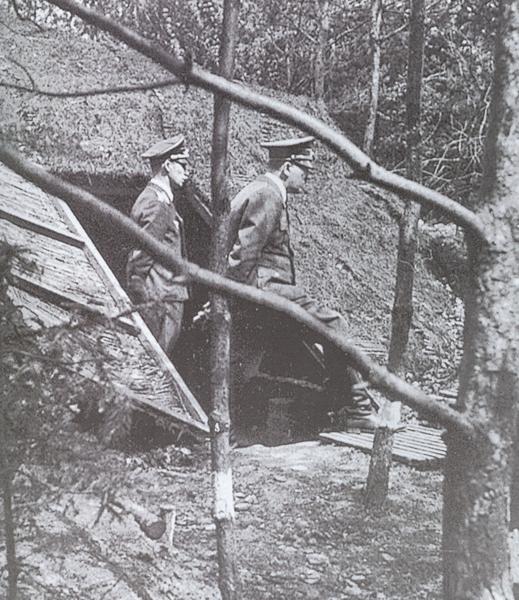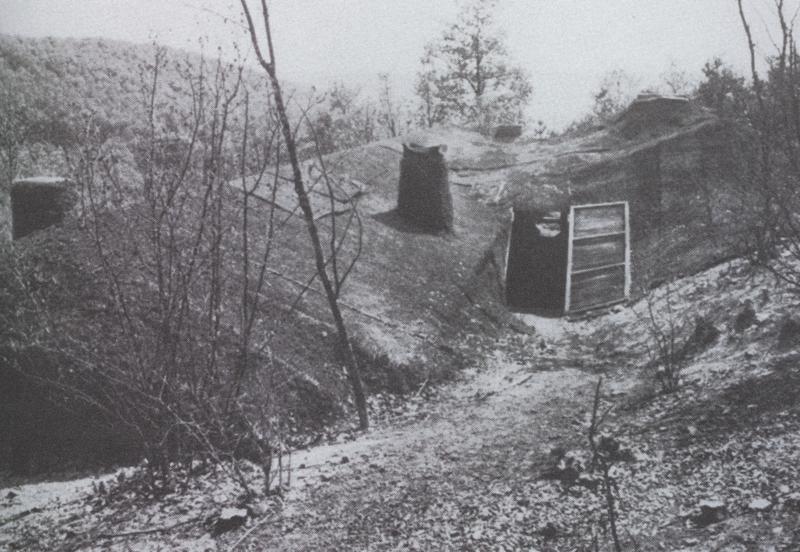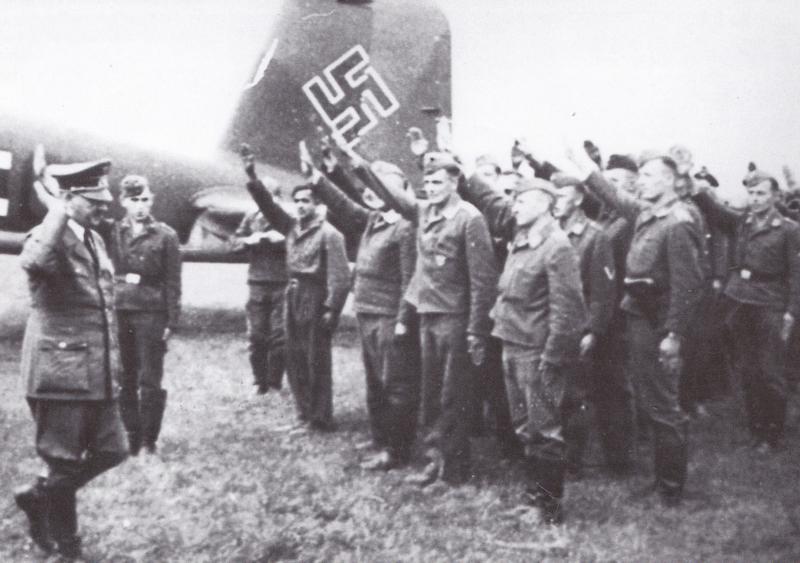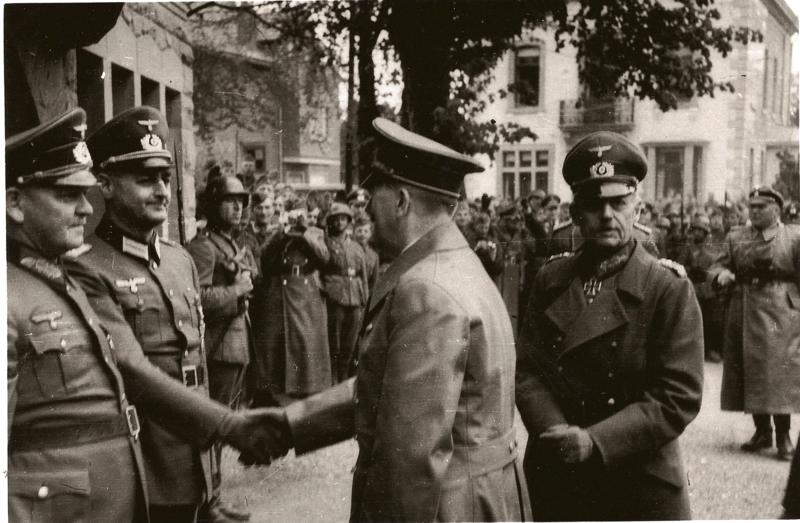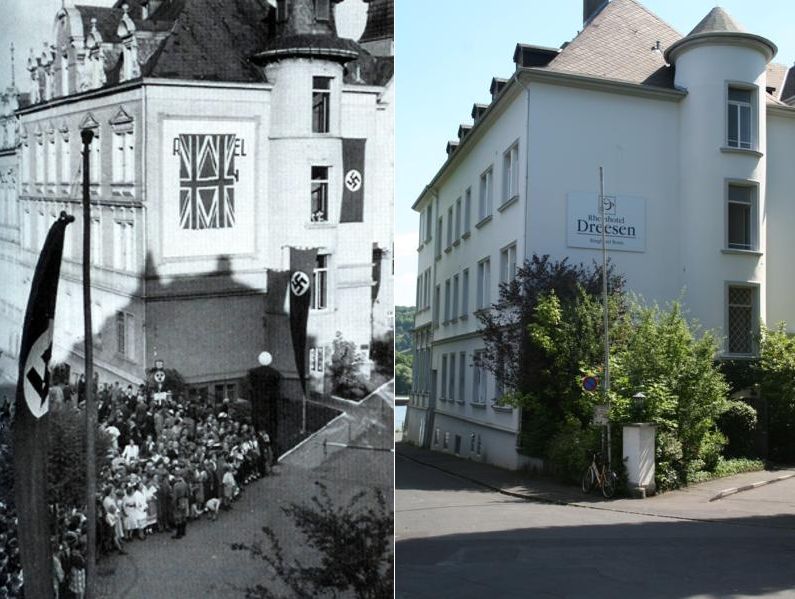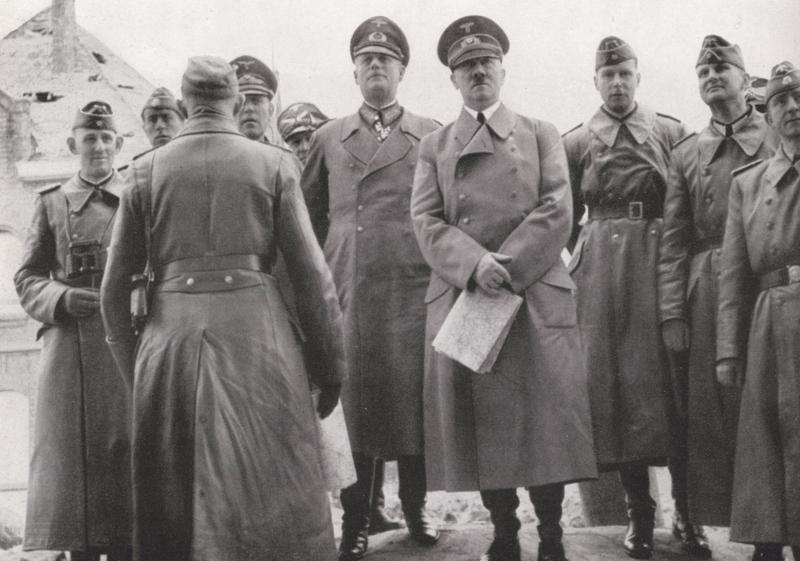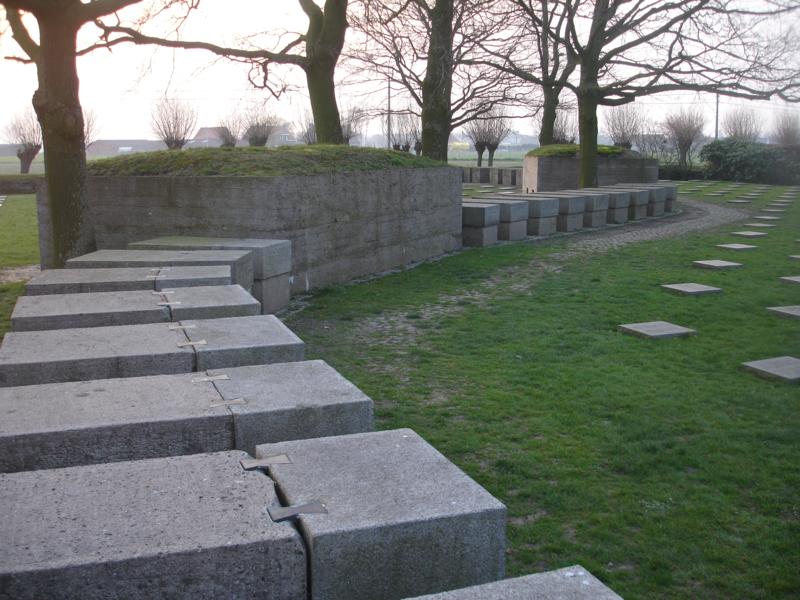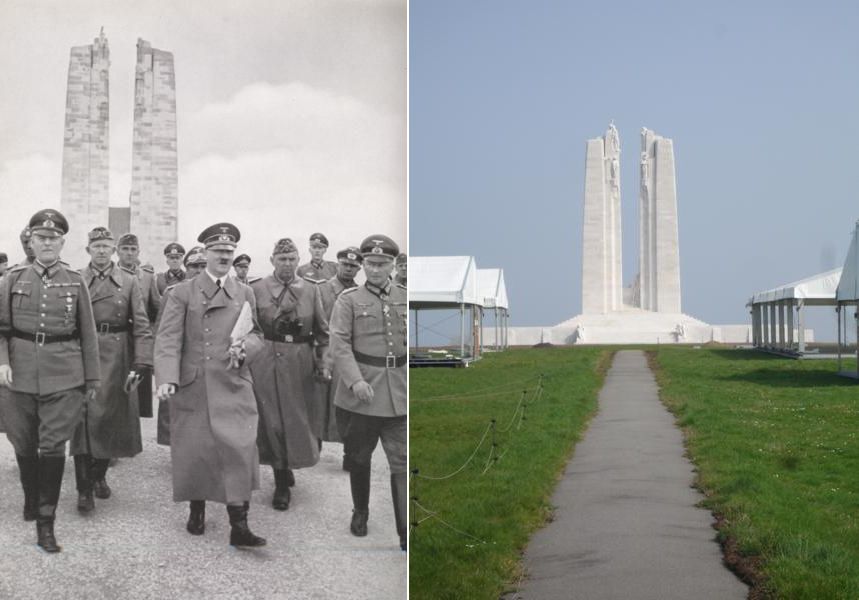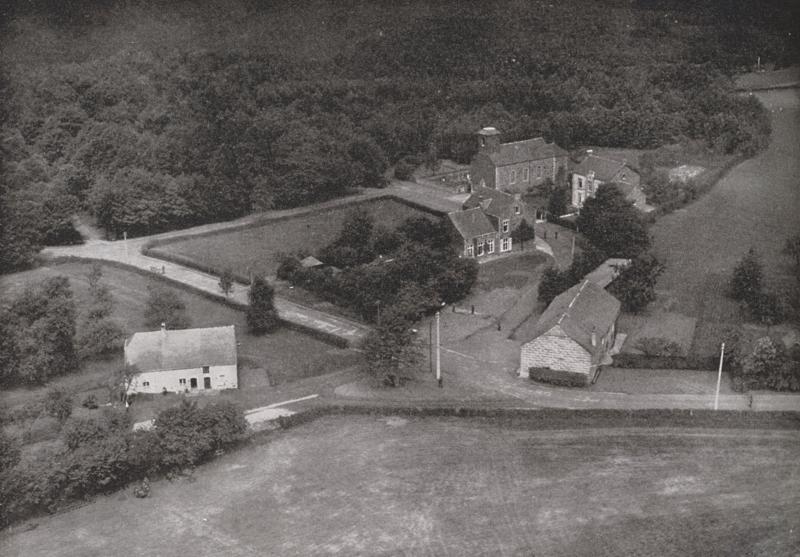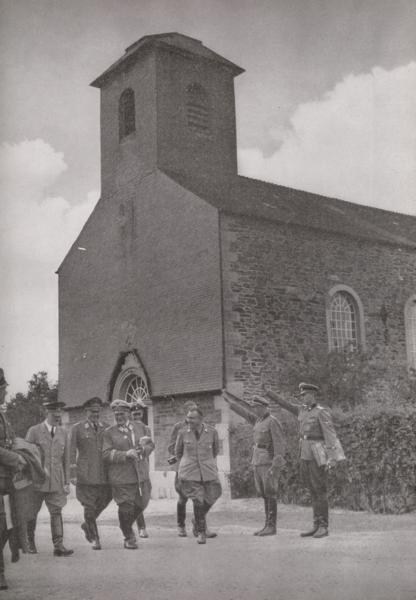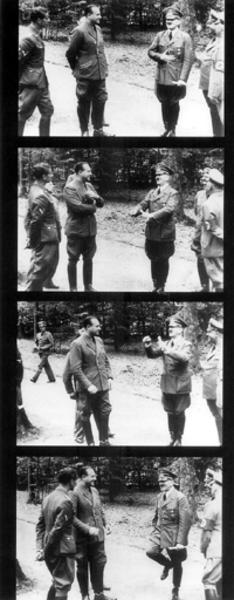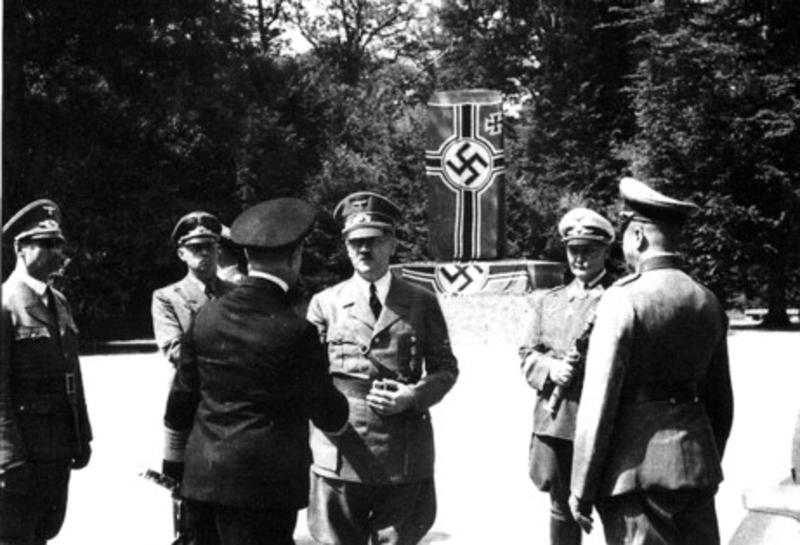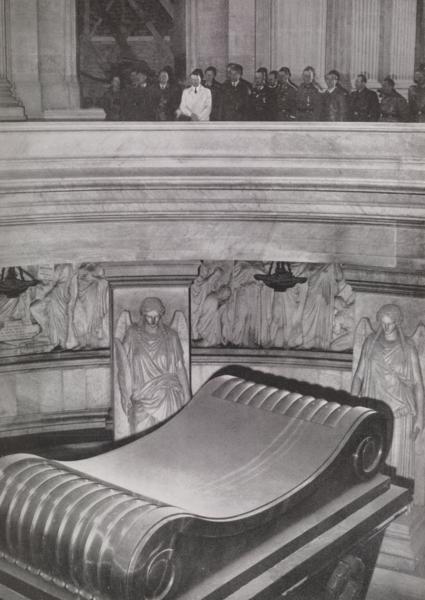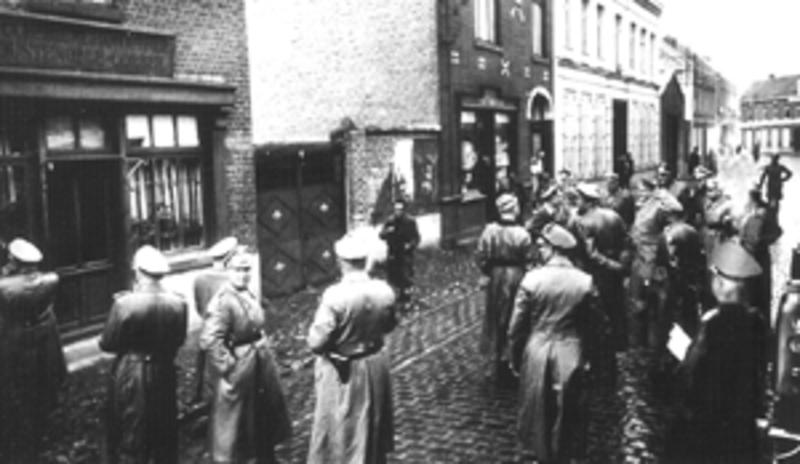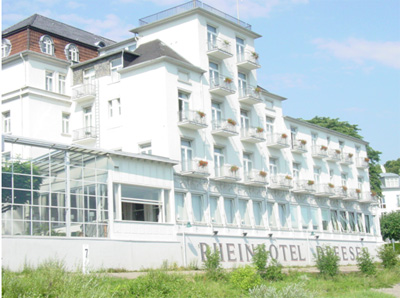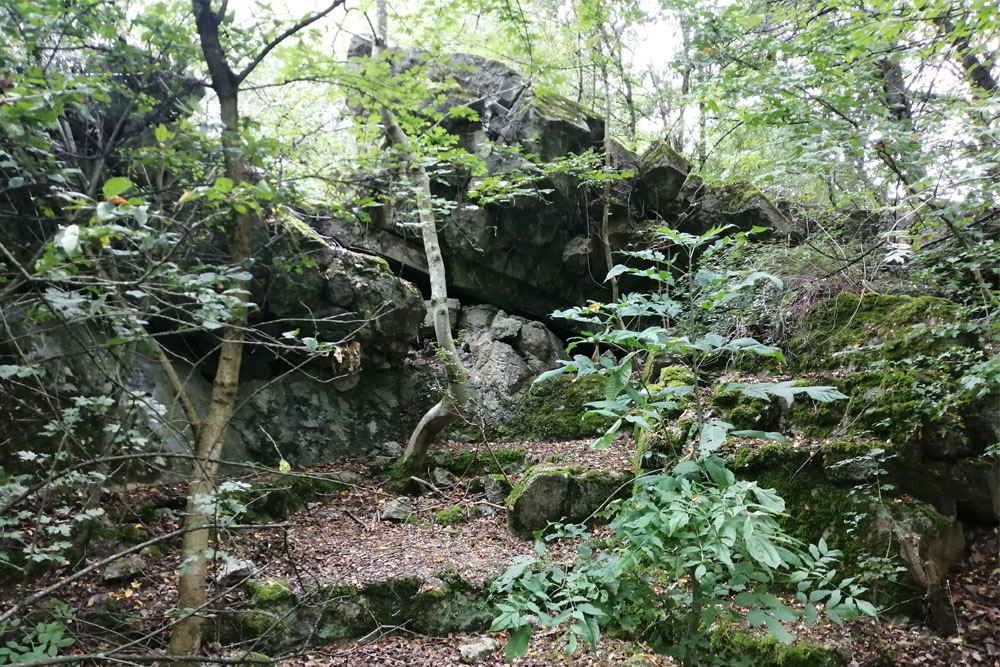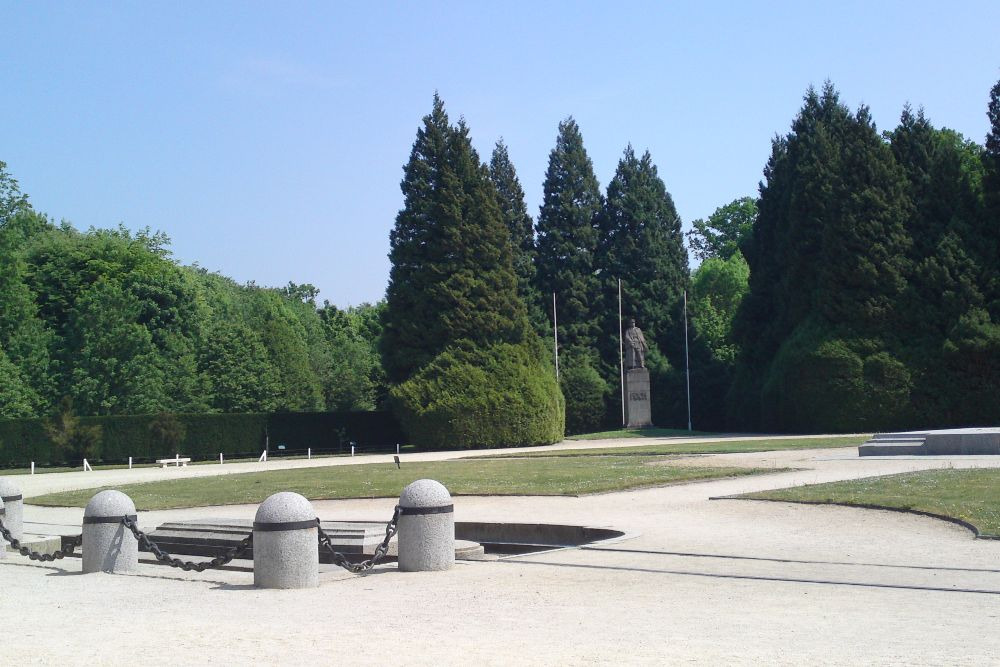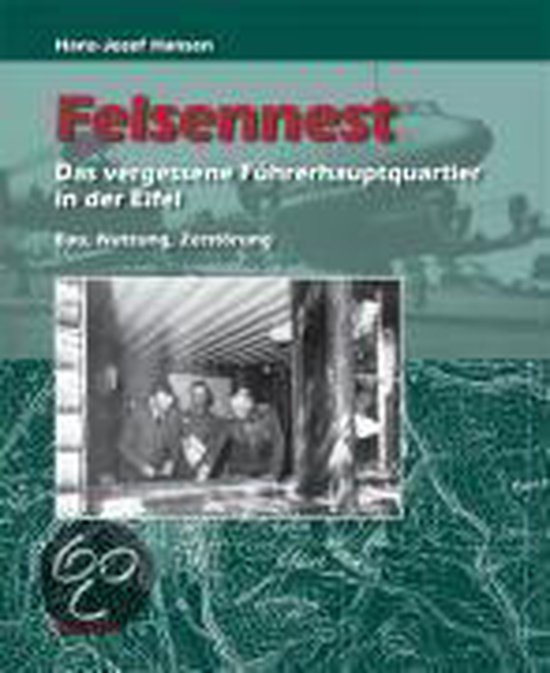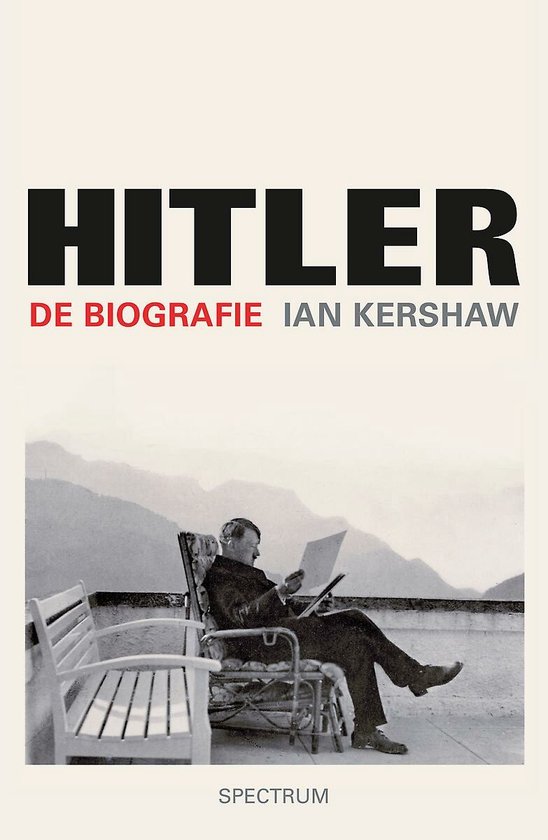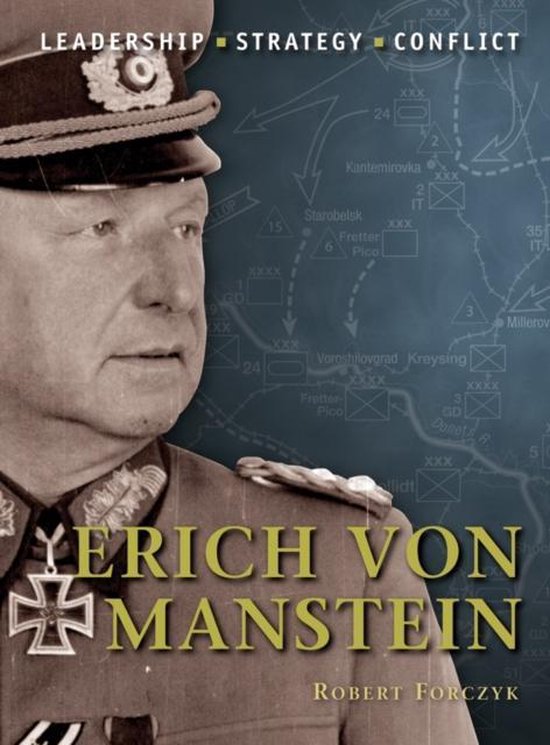Where was Adolf Hitler in May and June 1940?
In the afternoon of May 9th, 1940, Hitler’s Sonderzug [special train] left the railway station Finkenkrug in Berlin. Almost none of the passengers had been informed about the destination of this trip; for some of them it was just about a Whitsundays’ outing. But it concerned nothing of the sort. The trip which had been indicated to be a visit to the German troops in Denmark and Norway, took an interesting turn when, past Hamburg, the train headed west. From that moment onwards there was no more doubt about the purpose of the trip. Then, after adjutant Nicolaus von Below passed on the latest weather forecasts, Hitler announced that the attack on the West was definitive; it was clear: It would take only another few hours before France, The Netherlands and Belgium were going to be invaded by the German army.
The train in the meantime travelled onwards in the direction of southwest Germany, to the village of Euskirchen in Nordrhein-Westfalen. There Hitler boarded a car which took him to his favorite headquarters: the Felsennest [cliff side nest].
About Hitler’s whereabouts during the attack of the West (which had received the code name ‘Fall Gelb’ [Operation Yellow]) propaganda material exists, which has mainly been produced by Hitler’s personal photographer Heinrich Hoffmann. Once upon a time it has been published with the title "Hitler im Westen" [Hitler in the West]. By means of the chaotically arranged and assorted photo material, which is not dated, it may yet be reconstructed where Hitler was in May and June of 1940. The photographs do not only depict Hitler at the beginning of the Second World War but also during his short visits to the Belgian and Northern French sites he knew from the time of his military service in the First World war.
The Führer’s Headquarters the Felsennest
Hitler arrived in his headquarters in the Eiffel mountains at five a.m. on May the 10th. Thirty five minutes later the attack on the West started. The village of Rodert, close by the headquarters, from that moment onwards was mainly dominated by Hitler’s retinue , which consisted amongst others of staff members like Wilhelm Keitel, Julius Schaub, Alfred Jodl, Karl Brandt, Rudolf Schmundt, Nicolaus von Below and Karl-Jesco von Puttkammer. In the village, several houses provided boarding for soldiers and visitors and the village social center was turned into a movie theater which was almost daily visited by Hitler in order to watch movies about the progress of the battle. Many of the leaders of the German realm like Hermann Göring, Joseph Goebbels, Heinrich Himmler, Erich Raeder and Joachim von Ribbentrop would be visiting the Felsennest in the days to come.
In a statement to the troops at the western front Hitler said that morning: "The hour of the decisive battle for the German Nation has commenced. Todays’ fight will decide about the future of the German Nation for thousand years to come!" A day later Hitler held a conference of about two hours with general commander Generaloberst Walther von Brauchitsch in the nearby Forsthaus Hülloch. Hitler has supposedly said already then that he was delighted with the good results up to that time.
| Hitler’s Führer headquarters Everywhere in Europe headquarters have been built for Hitler, which were intended to coordinate troop movements from a location which was closer to the frontline than Berlin was. During the campaign in Poland, Hitler used his private train for that purpose, but from the attack of the West onwards he mostly used headquarters that were especially constructed for him. A number of those has never or just briefly been used by Hitler himself. The Führer headquarters consisted often out of various Sperrkreise [zones of defense]. Hitler’s bunker, barracks or housing was situated inside the innermost ring. Staff, guards and possible visitors stayed in the immediate vicinity. In that area anti-aircraft guns were installed, possibly bunkers and an aerodrome. This set up was not only valid for the famous Wolfsschanze in Eastern Prussia in present Poland, where Von Stauffenberg almost succeeded to terminate Hitler’s life on 20 July, 1944, [wolf trench] but also for Hitler’s villa on the Obersalzberg in the southern German Alps. The most famous Führer headquarters is without doubt the Führer bunker in the garden of the Reichskanzlei [Government seat] in Berlin where Hitler committed suicide. Further headquarters especially built for him were Tannenberg in the Schwarzwald, and Adelhorst in Hessen in Germany, Wolfsschlucht 1[wolf lair] in Belgium, Wolfsschlucht 2 and 3 in France and Wehrwolf in Ukraine. Also the Felsennest were such headquarters. On a hillside just outside Rodert, less than 100 km from the Dutch border the remains of these former headquarters can still be found. The bunkers that were situated on the Eselsberg outside the village have been demolished towards the end of the war, most probably by the Germans themselves. |
Definitielijst
- First World war
- Took place from 1914 till 1918 and is also named The Great War. The conflict started because of increased nationalism, militarism and neo-colonialism in Europe. Two alliances battled one another during the 4-year war, which after a dynamic start, resulted into static trench warfare. The belligerents were the Triple Alliance (consisting of Great-Britain, France, and Russia; later enlarged by Italy and the USA, amongst others) on the one hand and the Central Powers (consisting of Germany, Austria-Hungary, Bulgaria and the Ottoman empire) on the other hand. The war was characterized by the huge number of casualties and the use of many new weapons (flamethrowers, aircraft, poison gas, tanks). The war ended in 1918 when Germany and its allies surrendered unconditionally.
- Führer
- German word for leader. During his reign of power Adolf Hitler was Führer of Nazi Germany.
- propaganda
- Often misleading information used to gain support among supporters or to gain support. Often used to accomplish ideas and political goals.
- Wolfsschanze
- Headquarters of Adolf Hitler in East Prussia.
Images
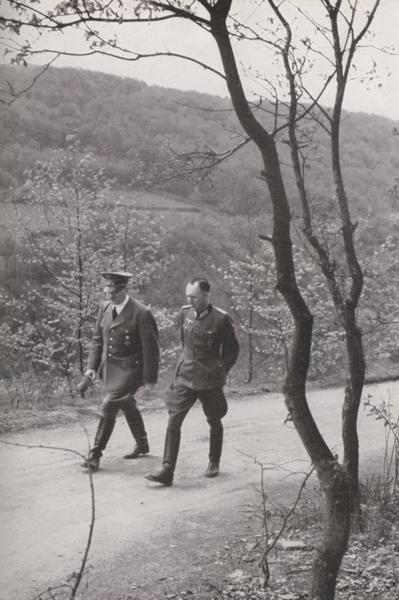 Adolf Hitler and his adjutant Schmundt on the pathway between the headquarters and the village. Source: Heinrich Hoffmann.
Adolf Hitler and his adjutant Schmundt on the pathway between the headquarters and the village. Source: Heinrich Hoffmann.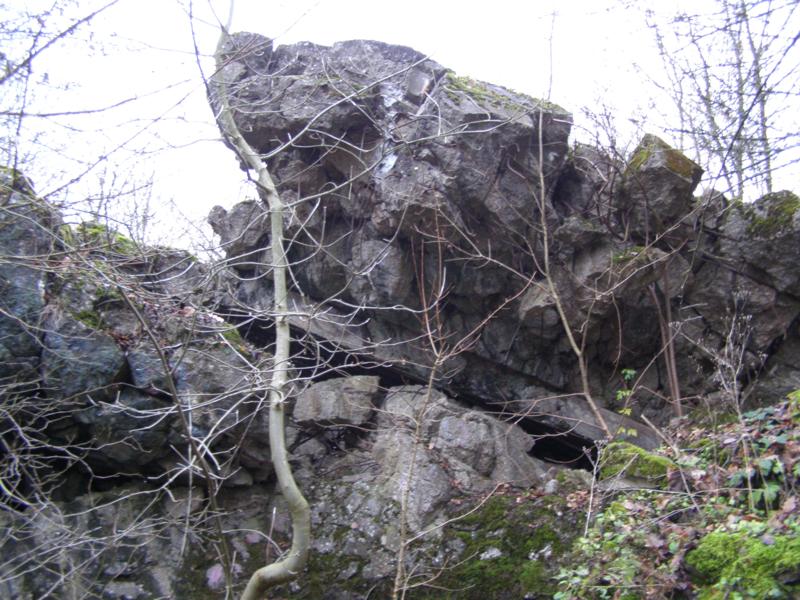 Between the trees the remains of the bunker can be distinguished. Source: The Hitlerpages.
Between the trees the remains of the bunker can be distinguished. Source: The Hitlerpages.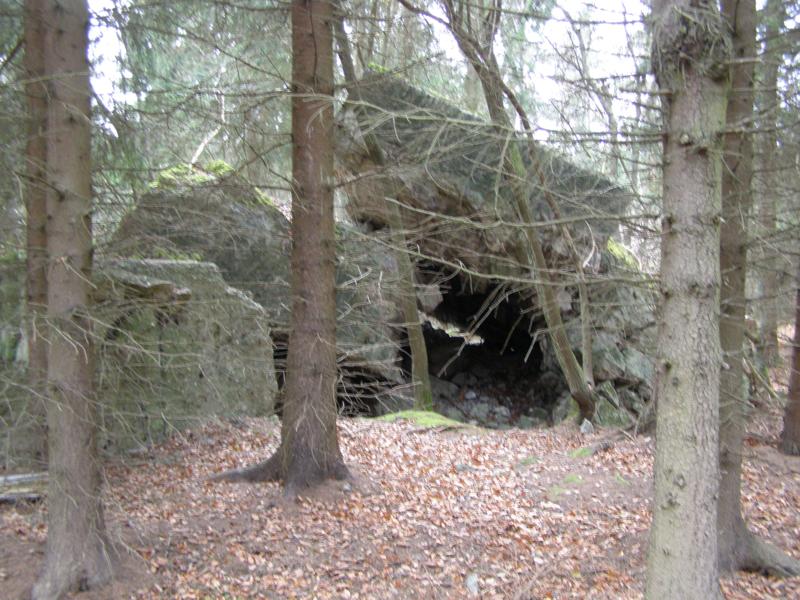 The demolished bunkers of the supreme command in the woods in the Roidert area. Source: The Hitlerpages.
The demolished bunkers of the supreme command in the woods in the Roidert area. Source: The Hitlerpages.Dunkirk
During the capitulation of Luxemburg on May 11th and of The Netherlands on May 15th, Hitler was in the Felsennest. At that moment however the battle in Belgium and France had not been decided. On May 17 Hitler therefore took off from the nearby provisional aerodrome Odendorf, to the headquarters of Army Group A in Bastogne which was under direct command of Gerd von Rundstedt. On the day the Germans entered Brussels, Hitler in Bastogne ordered Panzer General Heinz Guderian to stop his too speedy progressing march through Belgium, in order to provide the infantry with the opportunity to close up. General Franz Halder noted in his diary that Hitler was very nervous that day, that he did not want to take any risks and that his visit had only caused uncertainty. Hitler returned the same evening to the Felsennest.
When Guderian surrounded the allied forces near Dunkirk, Hitler again flew to Von Rundstedt who, in the meantime, had established his headquarters in the North French Charleville-Mezières. Here the historical mistake was made to halt the advance of the German troops in order to save their tanks for the battle in the south. Göring saw an excellent opportunity for his air force in the tricky situation in which the British Expeditionary Forces found themselves, and he contacted Hitler to convince him that his Luftwaffe would deal with the BEF. Hitler thereafter ordered Guderian to not to enter Dunkirk, with the consequences that the allied forces were allowed to escape. The idea that this had been done deliberately in order to persuade London to sign a peace treaty, has been turned down by historian Ian Kershaw. Namely, two days later Hitler as yet ordered to stop the evacuation of the troops, but by then it was already too late to prevent the allied withdrawal.
| Manstein and Fall Gelb During the campaign in Poland Hitler had not yet been involved himself with the strategy of the army, but he did during the offensives in the West, mainly induced by his preference for a surprise attack. This plan for a fast Blitzkrieg [literally: lightning strike war] with which the enemy in the West had to be quickly conquered, originated for a large part from the commander of Army Group A, Erich von Manstein. On the basis of the ideas of Von Manstein (and of the Panzer General Heinz Guderian) Hitler adapted his plan of attack, Fall Gelb. When the attack started, Manstein himself was still in Leignitz, about 700 kilometers away from the front. When he arrived in the west, the Germans had already forced a break through at Sedan and were on their way to the coast. Only on 27 May Mansteins troops were applied at Amiens. |
Bad Godesberg
After a campaign of 18 days, on the 28th of May, also Belgium capitulated. Three days thereafter Hitler drove from his headquarters to Bad Godesberg near Bonn in Germany in order to receive the Italian diplomat Alfieri who carried a letter from Mussolini which contained the promise that the Italians would enter the war on 5 June, 1940. The letter had to be handed to Hitler in person. The location for the meeting was the Rheinhotel Dreesen, which was where Hitler had met with Chamberlain in 1938. Alfieri himself said about this meeting with Hitler that they let him wait so long, without giving him any reason why, that he threatened to leave. When he was received by Hitler as yet, he appeared to be satisfied with the promise by Mussolini. In an answering letter Hitler requested Mussolini however to not participate in the war for the coming days, with the reasoning that he feared that the French Air Force would succeed in reorganizing. In reality it was inconvenient for Hitler that Italy would become a party in the war. He wanted to make France capitulate on his own merits and he was disappointed that Italy only wanted to become involved when the German victory was already looming.
Definitielijst
- Blitzkrieg
- The meaning of this word is “Lightning War”. Short and fast campaign. As opposed to a trench war the Blitzkrieg is very quick and agile. Air force and ground forces work closely together. First used against the Germans (September 1939 in Poland.
- capitulation
- Agreement between fighting parties concerning the surrender of a country or an army.
- infantry
- Foot soldiers of a given army.
- Luftwaffe
- German air force.
- strategy
- Art of warfare, the way in which war should be conducted in general.
Images
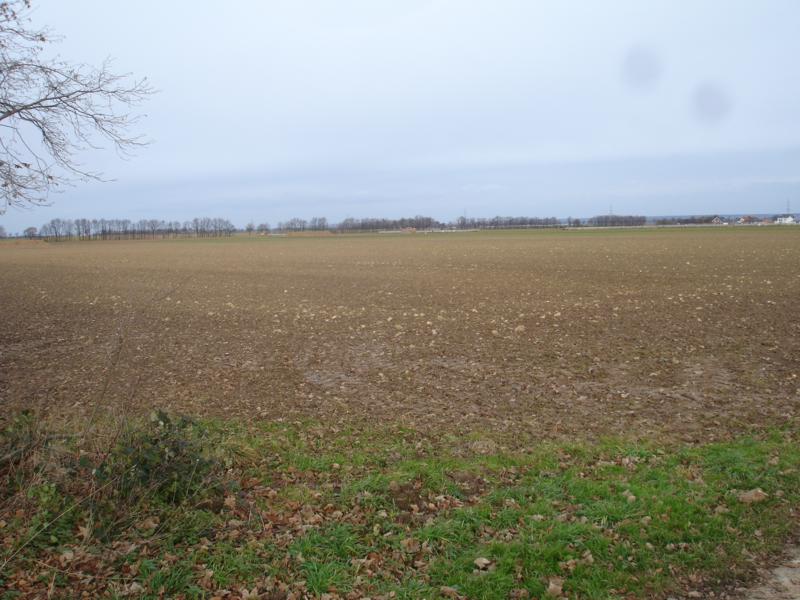 Nothing at all remains of the airport. Source: The Hitlerpages.
Nothing at all remains of the airport. Source: The Hitlerpages.The First World War
Early June 1940 Hitler made a number of trips to Belgium and the North of France, amongst others to speak to Generaloberst Fedor von Bock. He commanded Army Group B which was responsible for the occupation of The Netherlands and Belgium. Hitler and Von Bock met each other at the airport Brussels-Evere on the 1st of June. Also Commander General Von Brauchitsch was present. Hitler exposed his ideas on the next phase of the battle and also indicated to be still concerned about possible attacks from the direction of Paris. On that day he also decided to release the Dutch prisoners of war based on the fact that the Dutch and the Germans were supposed to be related culturally and ethnically .
Hitler did however not intent to only be present at military discussions and meetings; he also wished to visit the area he knew from the First World War. After the meeting at the airport, Hitler made a tour in Brussels which is rather well documented and can be reconstructed at the hand of photographs by Hoffmann: past the arch of triumph, along the justice palace to the Grote Markt [center marketplace] in order to depart via a detour in the direction of Gant. There again he discussed military matters, this time with General Von Küchner. At Kortrijk/Courtrai he successively met with Generaloberst Von Reichenau. Thereafter in Ieper/Ypres he visited the war memorial for the soldiers missing in action, the Menenpoort. Also the German war cemetery figured on his program, just like the Kemmelberg, Wervik and Lille. He spent the night in Château de Brigode near Lille.
On Sunday, June 2nd, Hitler departed from the castle to Pont-à-Marq where he met with General Feldmarschall Hans Günther von Kluge in order to be briefed about the progress in the battle with France. After another meeting with General Adolf Strauss in Avelin he visited again a number of locations related to the First World War, like the Canadian memorial at the heights of Vimy and the nearby French monument on the Lorettohoogte. In Bouchain Hitler spoke with General Walter Heitz, because he wanted to be informed why the German troops had been delayed here for a week. Heitz made a presentation on the tower of Ostrevant which provided a good view of the area. At three o’clock in the afternoon he flew from Nierges to Charleville-Mézières where he met with Von Rundstedt and others. Von Rundstedt had invited almost all his commanders to be present at the discussion. After a meeting of one hour he returned to the Felsennest. The second phase of the battle for France was about to begin.
| Hitler and the Vimy heights After Hitler had only been at the front line for a week as a real soldier in the First World War, he was appointed courier for the regiments command post. That did not mean that he had to run up and down between the headquarters and the forward trenches. That dangerous occupation seems not to have been a part of his duties. He was to be found most of the times way behind the lines, mainly in the regiments headquarters. During the battle for the Somme the headquarters of that time was hit by a grenade already after a few days. Hitler got injured and was transported to a hospital in Beelitz near Berlin. He therefore missed out for the largest part of the heavy battle for the Somme. And also the heavy fighting of his regiment at Vimy he did not witness. After his recovery he was allowed to remain for some time in Berlin where he visited museums. Thereafter he had to report back to his barracks in Munich en he could return to his beloved regiment. In June 1940 he did visit the Vimy heights. He viewed the trenches and the monuments which are still there. The Vimy heights together with the Canadian memorial remain a much visited location till today. |
Definitielijst
- First World War
- Took place from 1914 till 1918 and is also named The Great War. The conflict started because of increased nationalism, militarism and neo-colonialism in Europe. Two alliances battled one another during the 4-year war, which after a dynamic start, resulted into static trench warfare. The belligerents were the Triple Alliance (consisting of Great-Britain, France, and Russia; later enlarged by Italy and the USA, amongst others) on the one hand and the Central Powers (consisting of Germany, Austria-Hungary, Bulgaria and the Ottoman empire) on the other hand. The war was characterized by the huge number of casualties and the use of many new weapons (flamethrowers, aircraft, poison gas, tanks). The war ended in 1918 when Germany and its allies surrendered unconditionally.
- regiment
- Part of a division. A division divided into a number of regiments. In the army traditionally the name of the major organised unit of one type of weapon.
Images
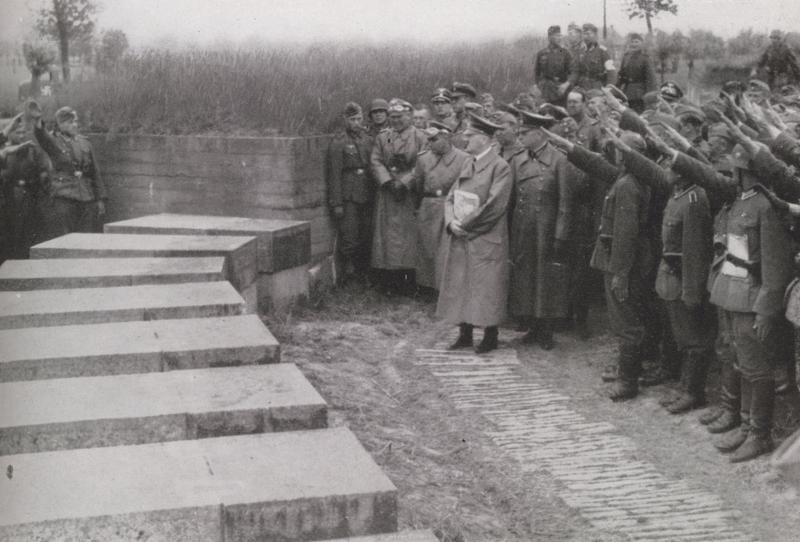 At the tombs of the German cemetery Langemark. Source: Heinrich Hoffmann.
At the tombs of the German cemetery Langemark. Source: Heinrich Hoffmann.Phase two in France
On June 5th, 1940, the second phase of the German offensive in France commenced by crossing the river Somme. Also the troops of the man behind the Blitzkrieg , Von Manstein, were now involved. And, like it would become the case later on in Russia, Hitler’s headquarters followed the frontline at a proper distance: the Felsennest in Germany was traded for the headquarters Wolfsschlucht 1 in the Belgian village Brûly-de-Pesche.
It did not even last ten days before the Germans broke through the Maginot line south of Saarbrücken and conquered Paris. In order to provide the French with a chance to surrender through Spanish intermediates, Hitler left on June 16th for Acoz, a village in Henegouwen/Hainaut where he had a meeting with the Spanish General Juan Vigon. When the French surrendered via these Spanish contacts one day later, Hitler was back again in Brûly-de-Pesche. When he heard the news, he stamped the ground with his foot for joy. This way to express his pleasure became a source of amusement for his enemies. Namely Hitler was being filmed at the moment that this message was passed through in the Wolfsschlucht 1 and that film was edited by the Scotsman John Grierson for the Canadian department for propaganda in such a way that it seemed as if Hitler danced a crazy little jitterbug.
That same day Hitler flew to Frankfurt in order to board his Sonderzug from there to Munich. There he met Mussolini on the 18th of June for a meeting about the French request for an armistice. Italy hardly had participated in the battle so Hitler did not intend to please Mussolini. Mussolini did therefore not obtain permission to take over part of the French naval fleet. Hitler seemed to be prepared to offer the French reasonably moderate conditions and therefore Italy did not participate in the negotiations about the armistice in Compiègne.
The, as it finally proved to be, biggest German victory of the Second World War, still had to be formalized. Therefore Hitler returned on June 19th to Brûly-de-Pesche in order to depart one day later again to the nearby Chimay. There he had a meeting with Walter von Brauchitsch in the army headquarters. Hitler issued the order to use the railway car of the French Marshall Foch symbolically again to negotiate the peace treaty with France. In this wagon the armistice between Germany and the Allied Forces had been signed at the end of the First World War on November 11, 1918.
Negotiations in Compiègne
Two days later on June the 21st, Hitler went to Compiègne, where at the occasion of the negotiations, a piece of rail track had been laid out in order to be able to place the railroad car back on its original spot. On exactly the same place deep into the Forest of Compiègne near the village of Rethondes, where in 1918 the negotiations had taken place, these would be conducted there now again. With the big difference that this time the Germans had gained the victory over the French.
A whole group of high ranking Nazis amongst whom Göring, Raeder, Brauchitsch, Keitel, Ribbentrop and Hess, also joined him at that location. They welcomed Hitler at the Alsace-Lorraine monument, a statue of a German eagle being stabbed by the sword of the allies in the First World War. The statue was covered with swastika flags, to prevent Hitler from seeing it. Together they walked along the long avenue to the location where in 1918 the railroad wagon had been. The monument that had been erected on that spot had not been covered but the words must have been as annoying to him as the statue that stood at the beginning of the alley. Hitler read the text which concerned the death of the criminal pride of the German Reich. Thereafter he entered the train wagon with his retinue. He only stayed during the reading of the preamble in which the allies were blamed for the breaking out of the war both in 1914 and in 1940. The negotiations he left up to his subordinates. The German defeat had been made good. France was going to be divided in two: in an occupied territory and in the non-occupied "free zone" under the Vichy-government. Later on the estate car was transported to the Lustgarten in Berlin after the negotiations were terminated. During the last phase of the war the wagon was transferred to Crawinkel at about 22 kilometers south of Gotha, in Thüringen. In March 1945 the car burned down, possibly incinerated by the SS.
Definitielijst
- Blitzkrieg
- The meaning of this word is “Lightning War”. Short and fast campaign. As opposed to a trench war the Blitzkrieg is very quick and agile. Air force and ground forces work closely together. First used against the Germans (September 1939 in Poland.
- First World War
- Took place from 1914 till 1918 and is also named The Great War. The conflict started because of increased nationalism, militarism and neo-colonialism in Europe. Two alliances battled one another during the 4-year war, which after a dynamic start, resulted into static trench warfare. The belligerents were the Triple Alliance (consisting of Great-Britain, France, and Russia; later enlarged by Italy and the USA, amongst others) on the one hand and the Central Powers (consisting of Germany, Austria-Hungary, Bulgaria and the Ottoman empire) on the other hand. The war was characterized by the huge number of casualties and the use of many new weapons (flamethrowers, aircraft, poison gas, tanks). The war ended in 1918 when Germany and its allies surrendered unconditionally.
- Maginot line
- French defence line along the French-German border.
- offensive
- Attack on a smaller or larger scale.
- propaganda
- Often misleading information used to gain support among supporters or to gain support. Often used to accomplish ideas and political goals.
- swastika
- Equilateral cross, symbol of Nazi-Germany.
Images
Hitler the tourist
After the victory over the French, Hitler undertook a number of trips to various locations in Belgium and in the North of France. The discussion about the exact date on which he visited Paris has never been solved, but the tour of the city has been well documented with photo material. In the very early morning of either June 23 or June 28 Hitler arrived at Le Bourget Airport north east of Paris. Together with the artist Arno Breker and the architects Albert Speer and Hermann Giesler he drove to the Opèra at the Rue Gluck which the group entered for a short guided tour. Hitler was very much impressed by the beauty of the building which he clearly had been studying beforehand.
Via La Madeleine and the Arc de Triomphe the cavalcade continued to the Place Trocadero from where the Eiffel tower could very well be viewed. They continued their sight-seeing tour to the grave of Napoleon in the Dôme des Invalides. Also this impressed Hitler very much and he took his time to have a good look at the mausoleum. He is supposed to have said immediately afterwards that this was the most important moment in his life. Of course the tour continued to the Notre Dame and the Louvre, one of the most ingenious examples of architecture according to Hitler, and stopped at the last sight: the Sacré Coeur. At a quarter past eight that same morning the group returned to the airport. Even though Hitler said to Albert Speer that this visit had been a dream come through, he had spent less than three hours in Paris. And he would never ever return.
| Hitler in Paris Precisely when it concerns Hitler’s visit to Paris, there is a discussion about the exact date when that took place. Thanks to photo and film material the visit has been documented, but whether Hitler was in Paris on 23 or 28 June 1940 has never become clear. The most obvious of the two dates would be the 23rd but the photographs and the rolls of moving pictures do not carry a date and the propaganda material by Herman Hoffmann shows in completely wrong order first the pictures of the visit to Paris, thereafter those of Hitler and Mussolini in Munich and lastly the material from Compiègne. Because the visit to Paris took place very early in the morning, there were only a few French witnesses. Two of the Germans present, Arno Breker and Hermann Giesler state that the short visit took place on the 23rd. An old number of the war magazine ‘After the battle’ quotes exactly the same date. The fact that the 23rd was a Sunday is possibly the explanation for the early morning quietness which shows on the pictures and photos. But Hitler’s adjutant Nicolaus von Below and eyewitness Albert Speer nominate Friday the 28th as the date of the visit, the day that Hitler transferred from his headquarters the Wolfsschlucht 1 to his headquarters Tannenberg. Historians Joachim Fest and Ian Kershaw agree with that date, just like Swiss Paul Bruppacher author of chronicles about Hitler and the NSDAP. None of those three however explains why this date ought to be the correct one, whilst probably a mistake by Speer has been made which has been followed by the others. Certainty however does not exist, that’s why there is still obscurity about the date of the only visit by Hitler to the French capital city. |
More memories of the Great War
On the 25th of June, 1940, the day on which the hostilities between Germany, Italy and France definitively ceased, Hitler again visited a number of locations he remembered from the First World War. He was with his comrades from that war Ernst Schmied and Max Amann in the cathedral in Laon. Also Martin Bormann and Nicolaus von Below were in the company that later on visited Fort de Laniscourt. Hitler’s regiment in the First World war had been posted in this region in 1917. After they had also looked at the cathedral in Reims, the group flew back to Gros-Caillou the aerodrome near Wolfsschlucht 1.
A day later Hitler again took to the air with Amann and Schmied. An aircraft brought the men to Lille where they transferred into a number of cars. Firstly Fournes-en-Weppes was on the program. The house in which Hitler had been boarding in 1916 was (and is) still there, in spite of the devastations of the Great War. Also the headquarters of Hitler’s regiment at that time was still intact. In its garden, in 1916, photos had been taken in which Hitler also figured. One of those pictures was reproduced in more or less the same composition in 1940 and printed underneath the one from 1916 in the Nazi propaganda material. The trip continued to Fromelles where the farmhouse stood (and still is) where Hitler had been living for some time. They also had a look at a bunker in the Fromelles area in the Rue de la Biette. Via the British war cemetery in Aubers the route went on to amongst others La Bassee, Dunkirk and Messines. All places familiar to Hitler from the First World War. From an airfield near Lille the group was flown back to aerodrome Gros-Caillou.
Back to Germany
On 28 June Hitler left the headquarters in Brûly-de-Pesche in order to return to Germany. First he stayed another week in the Führer headquarters Tannenberg in the Black Forest, before he would make his glorious formal entry into Berlin. From the Black Forest on 30 June he visited the border region of France and Germany and went to Strassburg, Breisach and the Vosges mountains. In 1940 Hitler would return a few more times to the West. But thereafter only one more time: in June 1944, after the allied invasion.
Definitielijst
- First World War
- Took place from 1914 till 1918 and is also named The Great War. The conflict started because of increased nationalism, militarism and neo-colonialism in Europe. Two alliances battled one another during the 4-year war, which after a dynamic start, resulted into static trench warfare. The belligerents were the Triple Alliance (consisting of Great-Britain, France, and Russia; later enlarged by Italy and the USA, amongst others) on the one hand and the Central Powers (consisting of Germany, Austria-Hungary, Bulgaria and the Ottoman empire) on the other hand. The war was characterized by the huge number of casualties and the use of many new weapons (flamethrowers, aircraft, poison gas, tanks). The war ended in 1918 when Germany and its allies surrendered unconditionally.
- Führer
- German word for leader. During his reign of power Adolf Hitler was Führer of Nazi Germany.
- invasion
- Armed incursion.
- Nazi
- Abbreviation of a national socialist.
- propaganda
- Often misleading information used to gain support among supporters or to gain support. Often used to accomplish ideas and political goals.
- regiment
- Part of a division. A division divided into a number of regiments. In the army traditionally the name of the major organised unit of one type of weapon.
Images
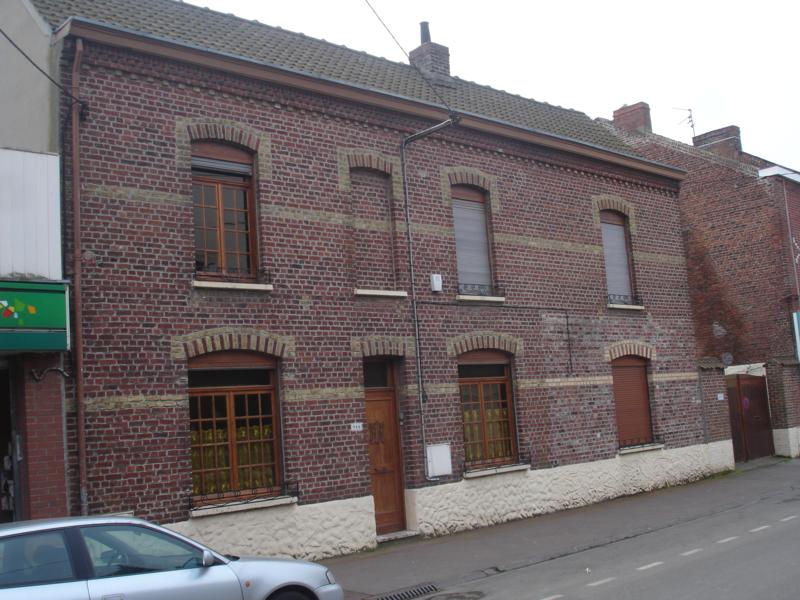 The former butcher shop in Fournes-en-Weppes where Adolf Hitler had been lodged for some time during the First World war. Source: The Hitlerpages.
The former butcher shop in Fournes-en-Weppes where Adolf Hitler had been lodged for some time during the First World war. Source: The Hitlerpages.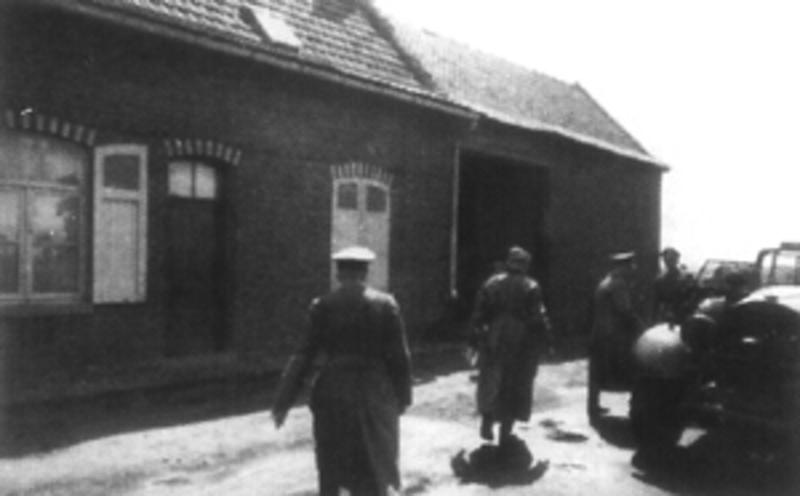 Hitler in Fromelles in front of the farm where he stayed for some time during the First World war. Source: Heinrich Hoffmann.
Hitler in Fromelles in front of the farm where he stayed for some time during the First World war. Source: Heinrich Hoffmann.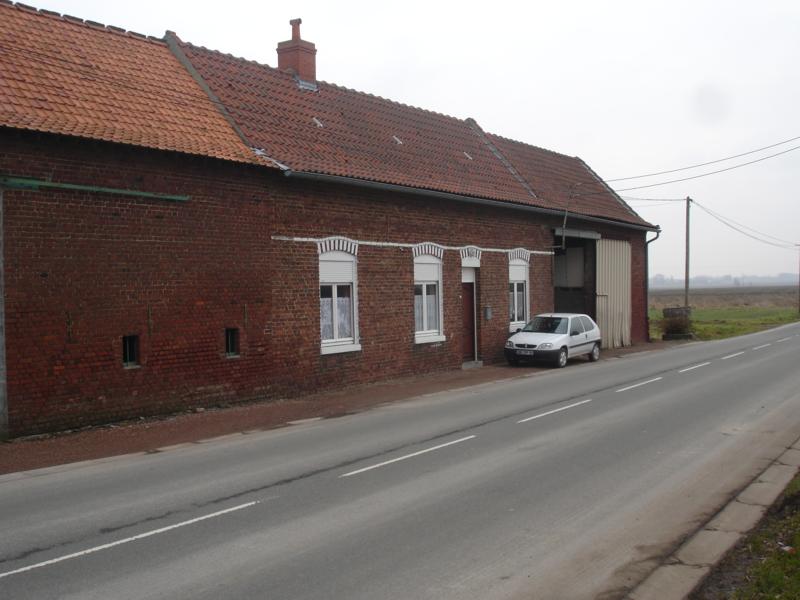 Much was destroyed during the First World war. This farm still stands firm today. Source: The Hitlerpages.
Much was destroyed during the First World war. This farm still stands firm today. Source: The Hitlerpages.Information
- Article by:
- Sjoerd de Boer
- Translated by:
- Fred Bolle
- Feedback?
- Send it!
Related sights
Related books
Sources
- BELOW, N. VON, Als Hitlers Adjudant 1937-1945, Pour le Mérite, Selent, 1999.
- BRUPPACHER, P., Adolf Hitler und die Geschichte der NSDAP 1938-1945, Books on Demand, Norderstedt, 2008.
- FORCZYK, R., Erich von Manstein, leadership-strategy-conflict, Osprey Publishing, 2010.
- HANSEN, H., Felsennest, das vergessene Führerhauptquartier in der Eiffel, Helios Verlag, Aachen, 2006.
- KERSHAW, I., Hitler, de biografie, Spectrum, Amsterdam, 2011.
- KUYPERS, J., Hitler verovert Parijs, Aspekt, Soesterberg, 2004.
- WEBER, T., Adolf Hitler en de Eerste Wereldoorlog, Nieuw Amsterdam, Amsterdam, 2011.
- Guide to Hitler's Headquarters, After the Battle, number 19, Battle of Britain International Ltd., London, 1977.
- Hitler aan het westelijk front, '40-'45 Toen en Nu, Quo Vadis, Soest.
- Paris 1940, After the Battle, number 14, Battle of Britain International Ltd., London, 1976.
- Adolf Hitler in Bilddokumenten seiner Zeit, Band 5, Verlag für geschichtlige Dokumentation, Hamburg, 1979.
- Many more photos of Hitler's trip through Western Europe can be found on the website: www.hitlerpages.com.
